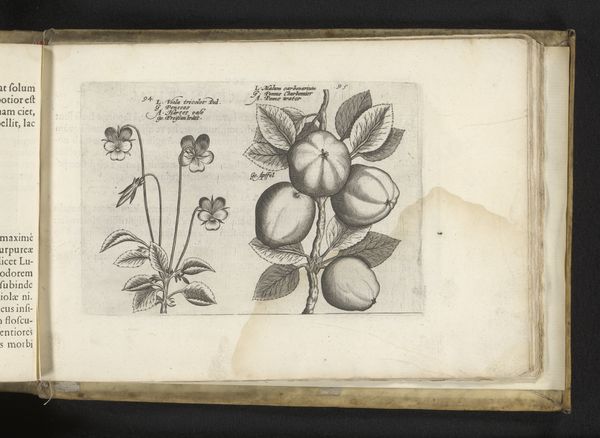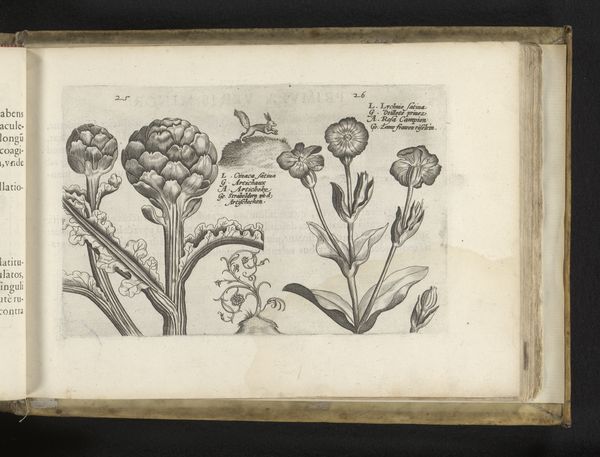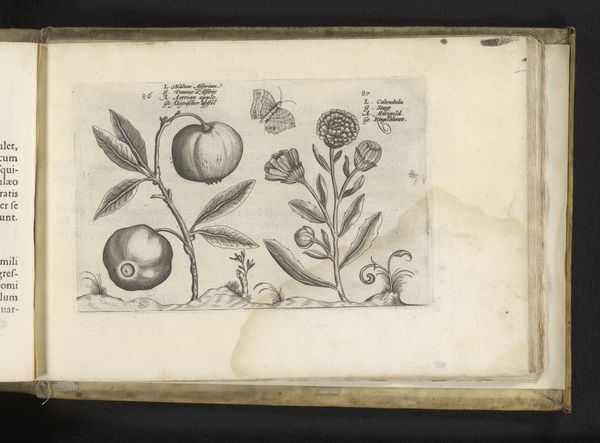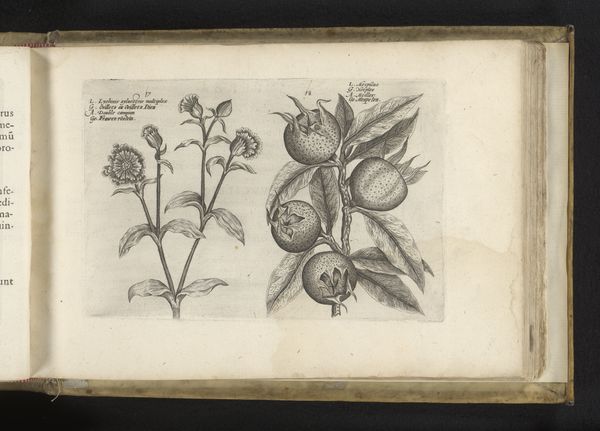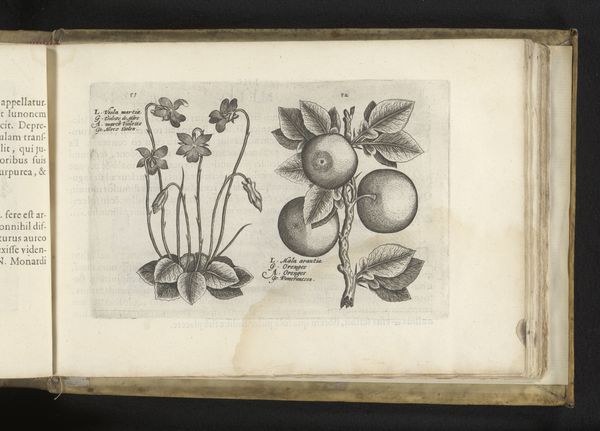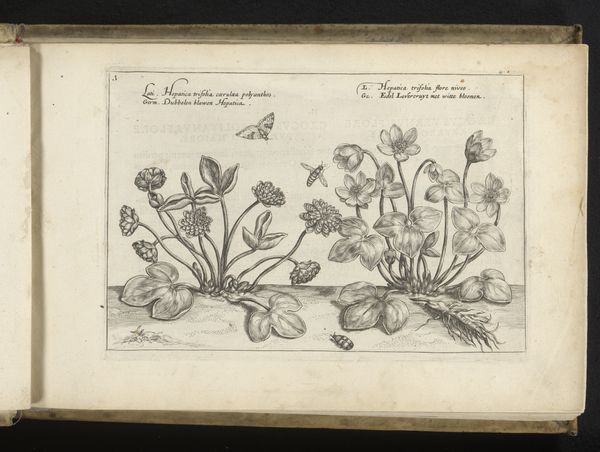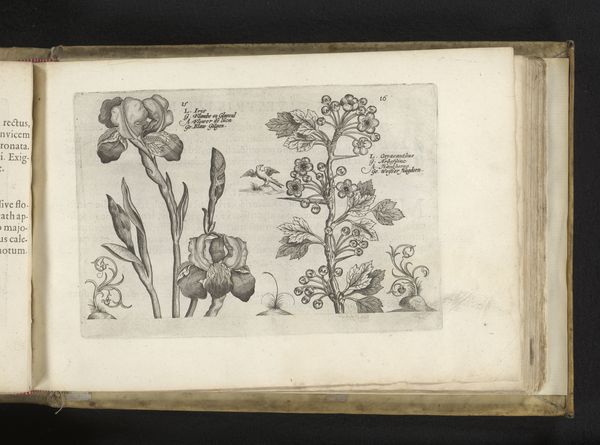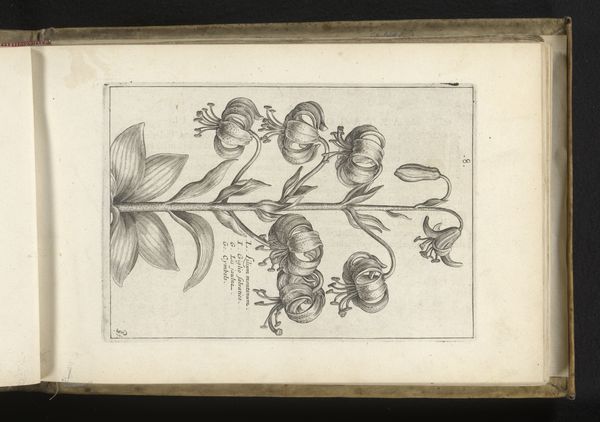
drawing, print, paper, ink, engraving
#
drawing
#
baroque
# print
#
landscape
#
figuration
#
paper
#
ink
#
geometric
#
line
#
engraving
Dimensions: height 130 mm, width 195 mm
Copyright: Rijks Museum: Open Domain
Editor: Here we have "Damastpruim en violier," from 1617, made by Crispijn van de Passe the Younger. It's a detailed engraving, an inky little world captured on paper and showcased in the Rijksmuseum. There is something so charming in the botanical accuracy, and those strange little figures under the one plant. What catches your eye about this piece? Curator: Oh, this is delightful! What grabs me immediately is how these aren't just objective botanical studies. Passe isn’t merely showing us the damson plum and the dame’s violet. He’s building a miniature symbolic world. The two figures by the tree for instance... are they Atlas figures? Perhaps symbolizing strength, endurance, the labor needed for knowledge. Do you see the juxtaposition of the natural and the allegorical? Editor: They almost look like they're playing rather than laboring. The plums, the tree people, and the violet – it is like an alternative world. Do you see the piece as celebrating the natural world, or is there a different purpose? Curator: I think both celebration and a subtle questioning are present. There’s this intense attention to detail—every vein on the leaf, the curve of the plum—a clear joy in observing nature's intricacies. Yet, by placing those little figures in there, Passe suggests that nature is not simply ‘out there’ but a construct, something interpreted and burdened, even manipulated, by human hands and minds. It is not pristine. How does that affect how we see this drawing as an image of the world? Editor: That is intriguing: they aren’t there as simple ornaments but as part of a much grander picture. It's almost as though the garden of knowledge is something to be wrestled into existence, isn’t it? Curator: Precisely. It’s a gentle reminder that our understanding, even of something as seemingly simple as a flower or a fruit, always involves effort and, dare I say, a little bit of playful interpretation. We can learn to observe by also observing the observer! Editor: I didn't expect a botanical drawing to lead us down such philosophical avenues! Now I want to see all botanical drawings through a symbolic lens. Curator: That's the joy of art, isn't it? It’s not just about seeing, but about seeing *through.*
Comments
No comments
Be the first to comment and join the conversation on the ultimate creative platform.
